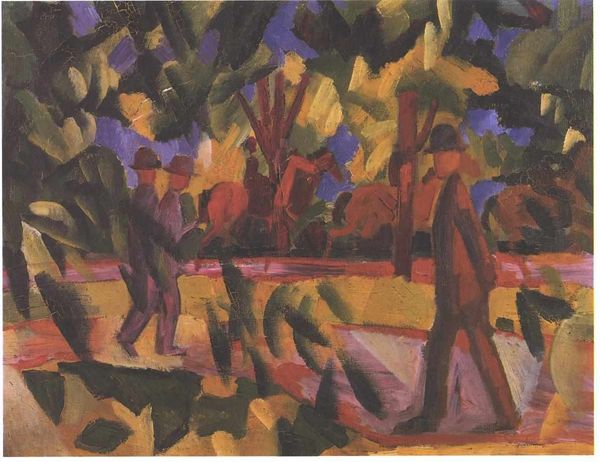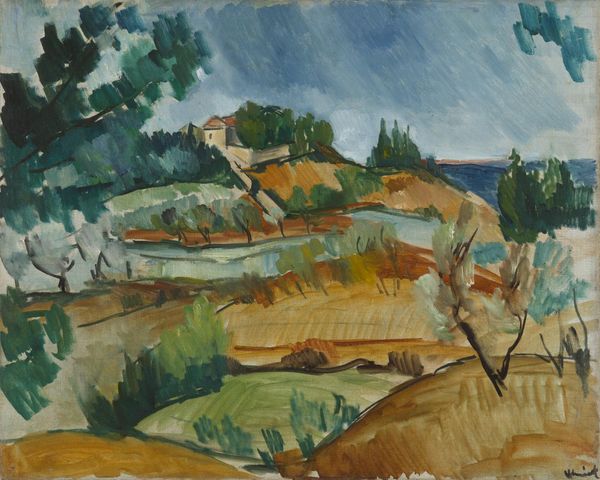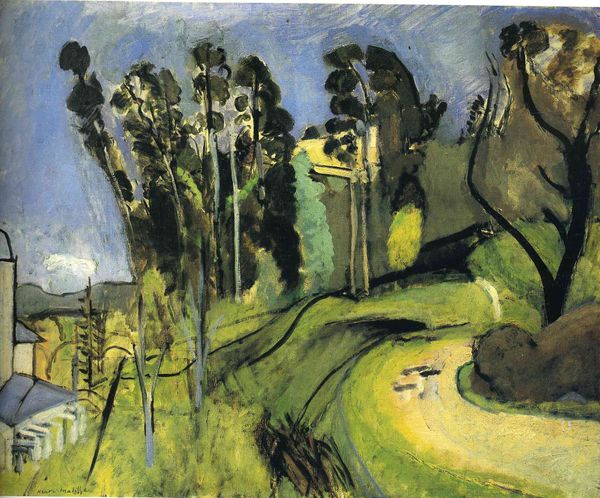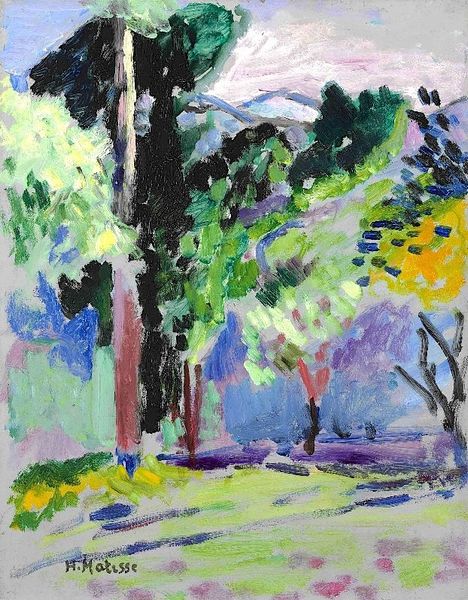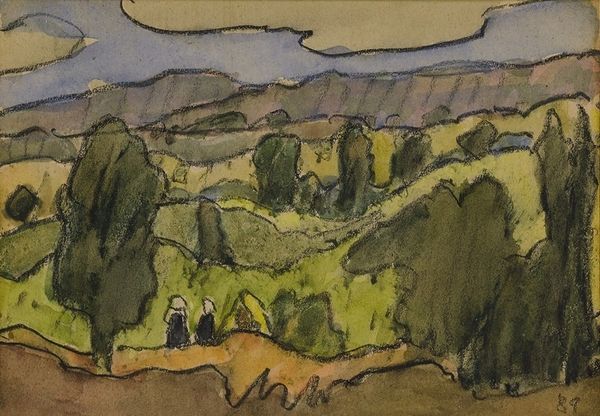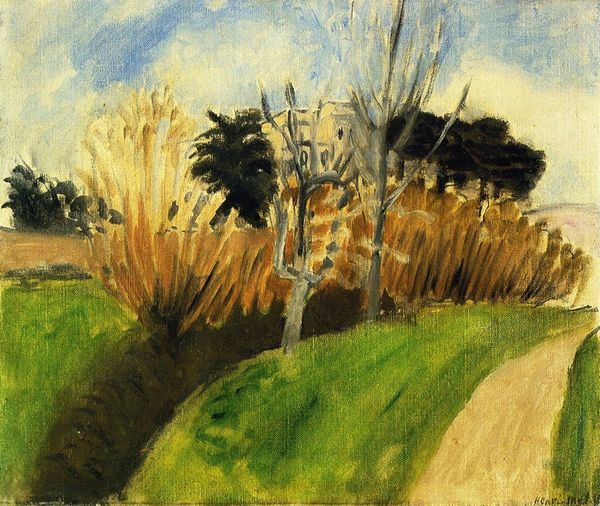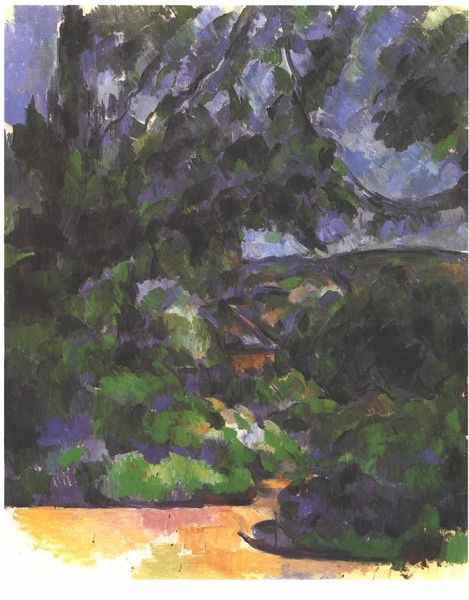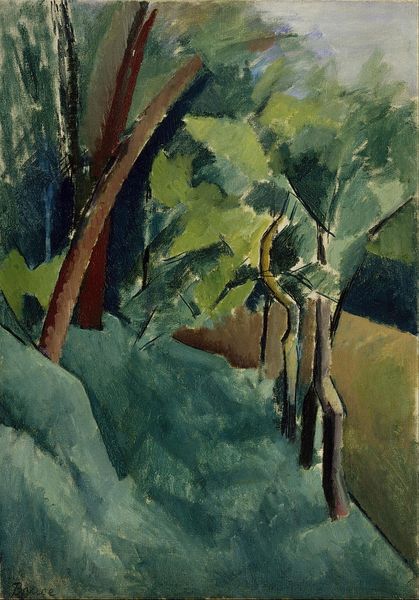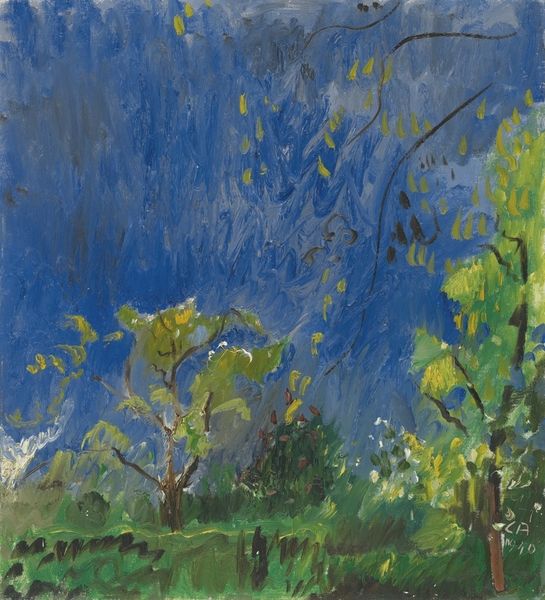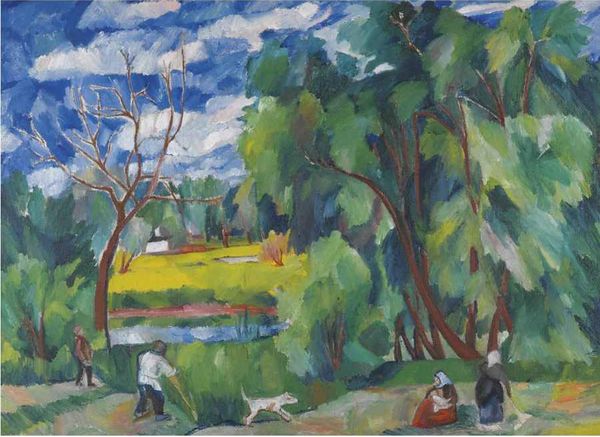
Copyright: Public domain US
Curator: Here we have Henri Matisse's "Landscape," painted in 1918. There's something wonderfully serene about the composition, don't you think? Editor: Serene? Well, the density of the dark greens does create a feeling of enclosure, almost…claustrophobia? The eye is drawn into this vortex of foliage with only glimpses of the building and sky peeking through. It evokes the looming challenges after World War I. Curator: You always bring it back to the politics, don’t you? Perhaps the density is merely reflective of nature's abundance, a sort of haven created in a moment of solace. The Fauvist colors aren’t screaming with that inner light we often find with Matisse but still carry notes of optimistic freedom, no? Editor: Well, this wasn’t necessarily Fauvism at its purest. Still, looking at the canvas now, I can see an appeal. It could be an escape—or simply being stuck inside the same old system? Take that single vertical swatch of bright green – so different in tone from the rest. It seems almost aggressively placed and very self-conscious. Curator: I can imagine him outside in his garden, the light dappling everything, and simply letting the colors dictate the rhythm, the trees almost vibrating in the heat. It speaks of surrender to sensory pleasure, a feeling perhaps much needed when society starts tearing itself apart... Editor: Speaking of, the historical context is unavoidable, though. Consider that this was painted during the tail end of World War I. Landscapes for an artist became a loaded symbol of hope. The choice to focus on a private garden as opposed to battlefields highlights the gendered experience of war. As they retreat into the home space they now have a vantage to witness changing societal roles... Curator: Indeed! Although perhaps one could look simply with child-like wonder—without a sense of responsibility to offer profound commentary. If art always comes with a side of socio-economic doom and gloom—is art even for all of us? Editor: I never thought of my insight as "doom and gloom." More that art gives you the chance to look and question, no? Curator: An art that merely evokes and stays in tune with emotions…isn’t there beauty in leaving some questions unasked? Anyway, that’s what it speaks to me… Editor: Perhaps the greatest achievement, in reality, comes when the observer recognizes that both types of interpretation may have importance, perhaps even coincide.
Comments
No comments
Be the first to comment and join the conversation on the ultimate creative platform.
